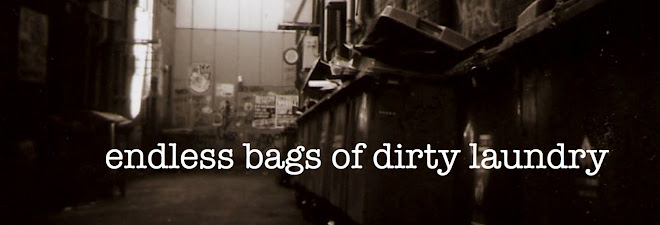Why do people in big bands keep asking me to take photos of them?
Well, to clarify, there are only two bands. And actually, I love shooting Eagle and the Worm. I also loved shooting the marvellous group of cool cats that make up this most excellent band, Saskwatch. Apart from the fact that it was a lovely group of people to be around for a few hours on a cold Saturday afternoon, I think I enjoyed doing this largely because Liam really did all the work; I simply loaded, pointed, focused and clicked.
Liam had scouted all the locations (which were very usefully within walking distance of one another), and he basically directed the whole thing. With so much excellent input on his part, I imagine he could have asked anyone who is handy with a camera to take the shots and he still would have ended up with some pretty bangin' images of the band. But Liam had previously expressed a preference for authentic film photography, so I suppose that's why he asked me. And if I don't say so myself, the above image is something that most other photographers would never have produced due to the specific combination of film, camera and developing process.
This is the stand-out image of the day for me. I've never seen this film produce these colours. It's totally wild. The actual subjects are very typically composed for a band shot, and I think that familiarity makes the psychedelia of the colours more effective.
Most of the film I shot on that awfully windy and icy afternoon was actually 35mm in my SLRs. But knowing Liam dug the ultra-film look, I went out of my way to shoot with my plastic cameras too. The results, as you can see, are pretty interesting if nothing else. While the lack of clarity may not be ideal for many publicity purposes (which I have written about before), they add something to the images that is really special.
This photo is a case in point. While the colours aren't as outrageous as the previous shot (though their ordinariness is wonderful in and of itself), the fabulous square frames on the bridge effectively reveal just how much these plastic lenses distort the images around the edges. I mean, can you believe these bridge frames are actually square? The symmetry in the distortion is close to perfect here, almost to the point that it looks like some kind of amazing avant-garde structural design.
I used some standard colour film for the first set-up too, which compared to the slide film looks pretty ordinary. But I love this photo. Not just because the washed-out colours have a particularly lovely vintage feel, but because it captures a great scene that, by chance, no other camera did. The little dog came from nowhere and excitedly raced past, disrupting the perfect formation that everyone was making every effort to hold. It's a really nice, unguarded moment.
Probably one of the best set-ups, Liam came across an abandoned armchair in this section of landscaping under the freeway overpass and thought it was too good not to use. I completely agree, though I'm not sure Nkechi did - I have to give her kudos for sitting through at least one spider attack. The concrete wall at the back, though subtle, adds this great atmosphere to the shot - very grimy, industrial, and also quite fascinating in that you wonder where the hell they are that has an armchair, lanscaping and a giant ugly concrete wall.
Similar to the bridge distortion on display earlier, this image has another prominent plastic-camera side effect: the light leak. This particular feature of plastic camera photography is alternately a blessing and a curse. There is a very fine line between a leak that adds character and a leak that completely ruins a photo. Happily, the light leak in this instance performs the former function.
While the light leak is great, for me it doesn't compare to the brilliance of the incredibly gothic colour tones in this photo. The atmosphere evoked by the location, the colours, the serious expressions on each face - and even the fact that Rob looks like he's disappearing into the shadows - is really beautiful. Unfortunately, the film is slightly underexposed so this image represents a rare occasion where I have had to do some relatively significant digital setting alterations in order to get a workable result. I don't usually do that, but in this case it is one hundred per cent worth it, and I'm sure the adjustments could be made in a darkroom too, if I'm getting really pedantic about the authenticity of my photos.
There were some great results from the 35mm shots too, but it's wonderful to be reminded that these often unreliable plastic cameras are capable of producing results beyond abstract shapes and colours. That there are so many variations in the plastic camera photos from the day make this project even more rewarding, because while I will never gain complete control over these notoriously temperamental pieces of equipment, it's nice to have a vague idea of the excellent images that they are occasionally capable of.
Subscribe to:
Post Comments (Atom)









No comments:
Post a Comment